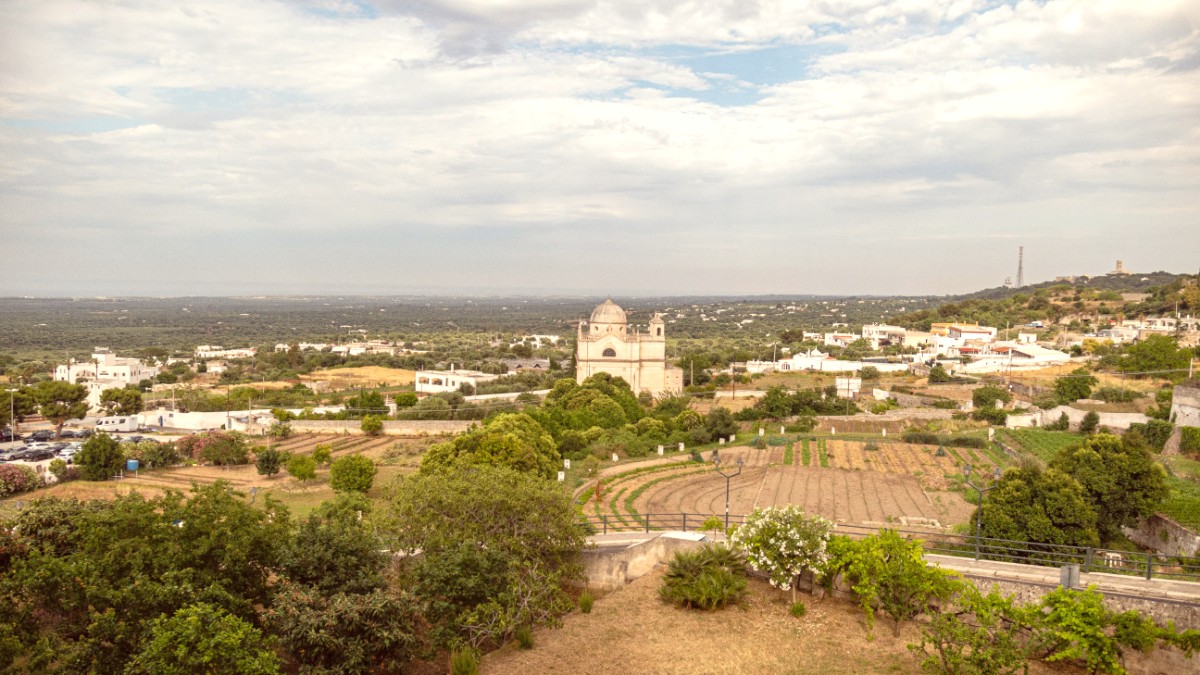
Puglia, Italy
Ostuni itself sits in the province of Brindisi, in southeastern Puglia. Its unique position on a hill, approximately 220 meters (720 feet) above sea level, gives it a prominent silhouette. The town overlooks a landscape that stretches eastward to the Adriatic Sea, only about 8 kilometers (5 miles) away. This elevation provides sweeping panoramic views.
Ostuni's hilltop location once functioned as a strategic defense. From this vantage point, ancient inhabitants could spot approaching threats from both land and sea. This natural defense capability shaped the town's historical development and its tightly packed, labyrinthine urban structure.
The elevation also helps keep the air fresher during summer months compared to the more humid coastal strip. Look out from the city's highest points to see endless olive groves, vineyards, and agricultural fields that extend to the horizon, meeting the clear blue of the sea.
Ostuni's history stretches back to the Stone Age. Evidence of human settlements from the Middle Paleolithic period has been discovered. The skeleton of "Delia," a pregnant woman dating back approximately 25,000 years, positions Ostuni as one of the oldest continually inhabited areas globally.
The city was formally founded by the Messapii, an ancient Iapygian tribe, around the 7th century BC. They built fortified settlements on hills for defense. Ostuni's initial Messapian settlement took advantage of the natural hilltop. Following the Messapian period, Ostuni fell under the control of the Romans, becoming an important agricultural hub.
Ostuni survived conquests by the Goths, followed by the Lombards, Germanic peoples who established a kingdom in Italy.
The Byzantines, representing the Eastern Roman Empire, exerted control over Southern Italy, influencing religious and artistic traditions.
The 11th century brought the Normans to Southern Italy. Under Norman rule, Ostuni gained increased importance, reinforcing fortifications and regional growth.
The 15th century marked prosperity under Aragonese rule, fostering economic and cultural development, leading to the construction of many distinctive white-washed buildings.
The practice of painting buildings with lime began out of necessity, disinfecting during plague outbreaks and cooling houses. This evolved into the town's defining visual characteristic.
Ostuni's architectural style reflects its varied past. While the dominant impression is the uniform white, elements of different periods appear. The Cathedral, with its Gothic facade and Baroque interior, showcases layers of history. The narrow, winding streets themselves speak to a medieval past, designed for defense and efficient movement within a compact space. The town's layout, with houses clinging to the hillside, rising in tiers, offers a visual representation of centuries of growth and adaptation.
Today, Ostuni's historical layers are its charm. Treading paths walked by Messapian tribes, Roman soldiers, Norman knights, and Aragonese merchants.
The enduring "White City" nickname and its visual appeal draws visitors from around the world to this ancient corner of Puglia.
The interplay of hill, valley, and sea defines Ostuni's climate, economy, and way of life. The very stones, produce, and views speak to this connection to the land.
The panoramic view of Ostuni, the White City, under a blue sky truly encapsulates its essence.
The close-up of Ostuni Cathedral's rose window showcases the intricate historical layers.
Every corner of Ostuni offers breathtaking photo opportunities, from its whitewashed alleys to panoramic sea views.
Wander through the labyrinthine streets, discovering hidden courtyards and artisan shops at every turn.
Experience the rich history and local life that define Ostuni's unique character.
A LifeStraw Go Water Filter Bottle can be an item for travelers who prefer to filter water, though not strictly required in Ostuni.